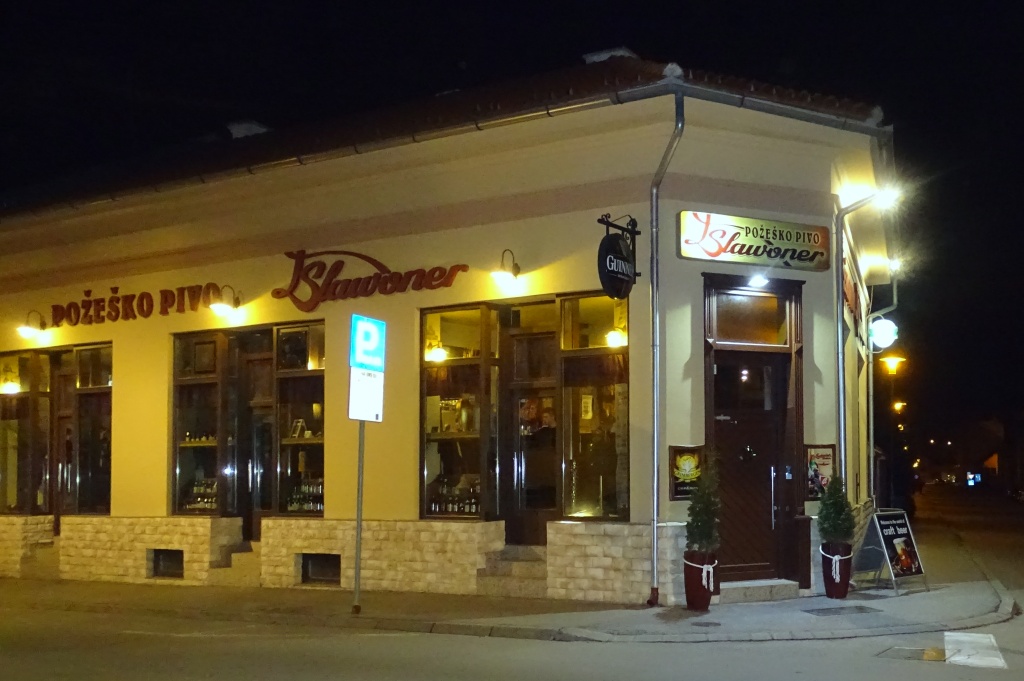Medieval Knight Tournament Returning to Jankovac Forest Park
September 25, 2022 - After three years, we are bringing good news for all fans of one of the most visited events in Slavonia – the Medieval Knight Tournament! It is returning in all its glory to the Jankovac Forest Park on the slopes of the Papuk mountain. Is there anything more relaxing than crisp air, crunchy leaves, and battles between knights in metal armour?
As reported by SiB, over ten knight associations will stage an authentic medieval atmosphere on the weekend of October 1st and 2nd (Saturday and Sunday) and provide content that children and adults will find equally interesting and entertaining.
The prices of tickets for visitors will be HRK 30/EUR 3.98 for adults and HRK 20/EUR 2.65 for children. Transportation will be organised in buses departing from information points in Slatinski Drenovac and at the Veterans' monument located on the pass between Velika and Jankovac. All personal vehicles will have to be left there, given that a very limited number of vehicles can be parked at the visitor parking premises of the Jankovac Forest Park itself.
The organisers of the tournament this year include the Papuk Nature Park, the Municipality of Čačinci, and the Order of Knights of Ružica Grad from Orahovica.
"I am glad that after two years, we can once again organise this event that gathers several thousand people in Jankovac, and this is a wonderful promotion of the municipality, the Park, and our region, and the only thing left that we can still wish for is good weather. Thank you to everyone who has worked hard to prepare this historical story, because, without these people, none of this would be possible," said Alen Jurenac, director of the Jankovac Forest Park.
The medieval knight's tournament is the most beautiful introduction to autumn, which is the most beautiful season on the slopes of Papuk.
For more, make sure to check out our dedicated Travel section.
4th Century BC Greek Silver Coin Found in Archaeological site on Papuk
September 22, 2022 - Archaeological sensation on Papuk. A Greek silver coin from the end of the 4th century BC was found at an archaeological site near Kaptol. The story doesn't stop there - it's only starting to come together. What wealth and power did the people who lived in this area have, and how long did it last?
As RTL reports, a Greek silver coin from the 4th century BC was found after the rain along the forest road on Papuk. It was carved with a depiction of Zeus enthroned with a bird, and on the other side is a depiction of Alexander the Great. Random passers-by found it. They saw pottery and pieces of vessels.
The locality near Kaptol is a well-known archaeological site with the graves of the warrior aristocracy, where prestigious weapons and equipment were found in Europe in the 7th century BC.
This means that the community that lived here had a major significance on the border of three worlds - the Mediterranean, Central Europe and the Danube.
At the Lisičja Jama locality, named after the ceramics that the foxes end up dislocating while digging their dens, archaeologists are excavating a settlement where it is assumed that 500 people lived. Numerous inventions prove this.
"And it certainly speaks of the fact that the people who lived in those areas were extremely advanced and prosperous at the time, and not only that, but they also traded and exchanged things with very distant regions", said Janja Mavrović Mokos, archaeologist and researcher.
The coin from the 4th century BC is crucial because it shows that the power of these people from Papuk, who lived at the intersection of cultures and trade routes, did not last for a short time but continuously for centuries.
"This shows continuity on the political, economic and cultural scene of over 300 years, which few can boast of today, let alone back then," said Hrvoje Potrebica, head of archaeological research.
A province is not a place but a state of mind, and Croatia should learn from history, which is the teacher of life, even today. And the plan is for the place of learning to be the Visitor Center of the future Papuk Archaeological Park, where this Greek silver coin will have its special place.
For more, make sure to check our our dedicated Lifestyle section.
Papuk Nature Park Will Have Two New Instructional Trails Until Spring
October 22, 2021 - In the heart of the Papuk Nature Park, 475 meters above sea level, is located the jewel of the Slavonia mountains: Jankovac, where its visitors can now enjoy two new educational trails.
By the end of September this year, the Jankovac Forest Park was visited by almost 50,000 visitors, and will soon be richer for two more educational trails, reports HrTurizam. These are two projects co-financed entirely by the European Union from the European Agricultural Fund for Rural Development, approved by the Agency for Payments in Agriculture, Fisheries and Rural Development, and refers to the type of operation 8.5.2. "Establishment and arrangement of educational trails, lookouts and other smaller infrastructure".
In one of the projects, the investment is focused on the establishment of an educational bike path with educational and recreational elements in the area of Slatinski Drenovac. Existing forest trains and six-kilometer-long roads will be used for tracing, so the vast majority of the trail passes right through the forest area. The educational trail will connect the Jankovac Forest Park and the Slatinski Drenovac settlement, in which the Papuk Nature Park Public Institution plans to invest in the future Visitor Reception Center. The youngest ones were also meant because a playground will be built in front of the mentioned center as part of the mentioned project. The total value of the project is HRK 743,480, and work is expected to begin next spring.
The second project carried out by the Municipality of Čačinci, and refers to the continuation of investments in the area of the Municipality and the Park, is a new section of the educational trail with a total length of four kilometers. The trail starts from the Jankovac mountaineering picnic area and continues on a slight slope to the canyon of the Kovačica stream and along with it at the foot of the old Klak fortress. The trail passes completely through the forest area and will interpret the context of the rich history of the Jankovac area and the Klak fortress, which was determined by the richness of the forests and the natural resources of Papuk.
The educational trail will longitudinally connect two existing facilities - the Jankovac picnic area with the nearby cultural and historical site of the Klak fortress, ie with Slatinski Drenovac. The total value of the project is HRK 743,342.75. The start of work on the tracks is expected in the spring of 2022, so the relief of Jankovac in terms of cars is expected as early as next summer.
"Jankovac Forest Park attracts more and more visitors every year, and judging by the number of visitors during this year's winter months, Papuk has become the most visited winter destination. Therefore, the Municipality of Čačinci and the Papuk Nature Park did not want to miss the opportunity to invest in the tourist infrastructure of Papuk. I am especially happy to announce an investment worth almost one and a half million kuna, which will make the Jankovac Forest Park even more attractive to cyclists and pedestrians. With their length and characteristics, the trails are suitable for all ages, so they will be ideal for family walks ", said Alen Jurenac, director of the Papuk Nature Park and mayor of Čačinci.
Check our full guide on all Croatian National and Nature Parks HERE.
For more on travel in Croatia, follow TCN's dedicated page.
Papuk Nature Park Striving to become Generator of Tourism Development in Slavonia
February 4, 2021 - Croatia's first UNESCO Geopark, Papuk Nature Park, strives to become a generator of tourism in Slavonia.
HRTurizam reports that fascinating news came from Papuk Nature Park last year. Although 2020 was very difficult for many tourist destinations in Croatia and the world, Papuk was a favorite destination for visitors. The increase in the number of visitors in the period marked by the pandemic, epidemiological measures, and bans is something that not everyone can boast about. But this result, or success, did not come by chance. This is the result of investments in the development of Papuk as a tourist destination - and not just financial investments.
“We want to be a generator of tourism development in this area. We have invested and will continue to invest in the future, but the coronavirus pandemic has accelerated the whole process, so we can say that the future is happening now. Visitors recognized our efforts and gave us confidence. This motivates us to further enrich the content, especially for families," said the Papuk Nature Park director, Alen Jurenac.
And it was the family visits to Papuk Nature Park that marked the past year and the beginning of 2021.
Namely, in January alone, the number of visitors to the Jankovac Forest Park increased by an incredible 400% compared to January 2020, or 4452 visitors this year compared to 882 last year. The weather and the snow, which both children and adults equally enjoyed, were certainly in favor. It is important to note that the increase in the number of visitors occurred despite the epidemiological measures due to which the Jankovac Mountain Lodge was closed.
"So far, in terms of tourism, we have mentioned Papuk as a destination that offers all the facilities for an active summer vacation in which we can match the Adriatic, and since this winter, Papuk has become an increasingly sought-after winter destination. Cold winter days have thus become an opportunity for the most beautiful family gatherings. These figures oblige us to make additional investments to bring Papuk closer to visitors through all 365 days of the year," said Jurenac.
However, in addition to the announced investments in year-round tourism, it is necessary to motivate the local population to engage in tourism and monitor the development of Papuk as a tourist destination. The fact is that Papuk is developing in a good direction, and statistical data support it. Namely, from year to year, there is an increase in the number of visitors, as well as the content in the Papuk Nature Park.
"Our wish is to become a destination where tourists will spend a few days. The whole story is heating up. A weekend settlement with luxury villas has already grown in Zvečevo, for which there is great interest. The villas are constantly full over the weekend, and interest in buying real estate in this area is growing. Now we want to achieve even better cooperation with the local population. This would increase the number of accommodation capacities and enable tourists to stay longer in Papuk," says Jurenac.
In times of limited possibilities, Papuk has become a destination where you can enjoy the unique gift of nature all the time.
For the latest travel info, bookmark our main travel info article, which is updated daily.
Read the Croatian Travel Update in your language - now available in 24 languages.
Pozega-Slavonia Hunters Send Two Tons of Game to Earthquake Area
February 2, 2021 – In an admirably understated manner, Pozega-Slavonia hunters humbly pitched in to the relief efforts and sent two tons of game to those in the earthquake-affected area of Sisak-Moslavina
It's fair to say that in this day and age, hunters often get a bad rep. There are far more people in the world today who abstain from eating any meat – vegetarians and vegans – than those who go hunting. Changing times. For sure, it wasn't always this way.
In Croatia, hunting associations play a vital role in maintaining the beauty and accessibility of the country's rural landscape. Not that you much hear about this aspect of their undertakings. Perhaps they are typically just rather understated people?
You might easily come to that conclusion when considering the recent humanitarian action undertaken by Pozega-Slavonia hunters. Organised by the county hunting association and county officials, Pozega-Slavonia hunters from each of the region's district societies contributed in an effort to send the game taken by each – mostly deer and wild boar - to the earthquake-hit areas in Sisak-Moslavina County. They so far managed to send a whole two tons!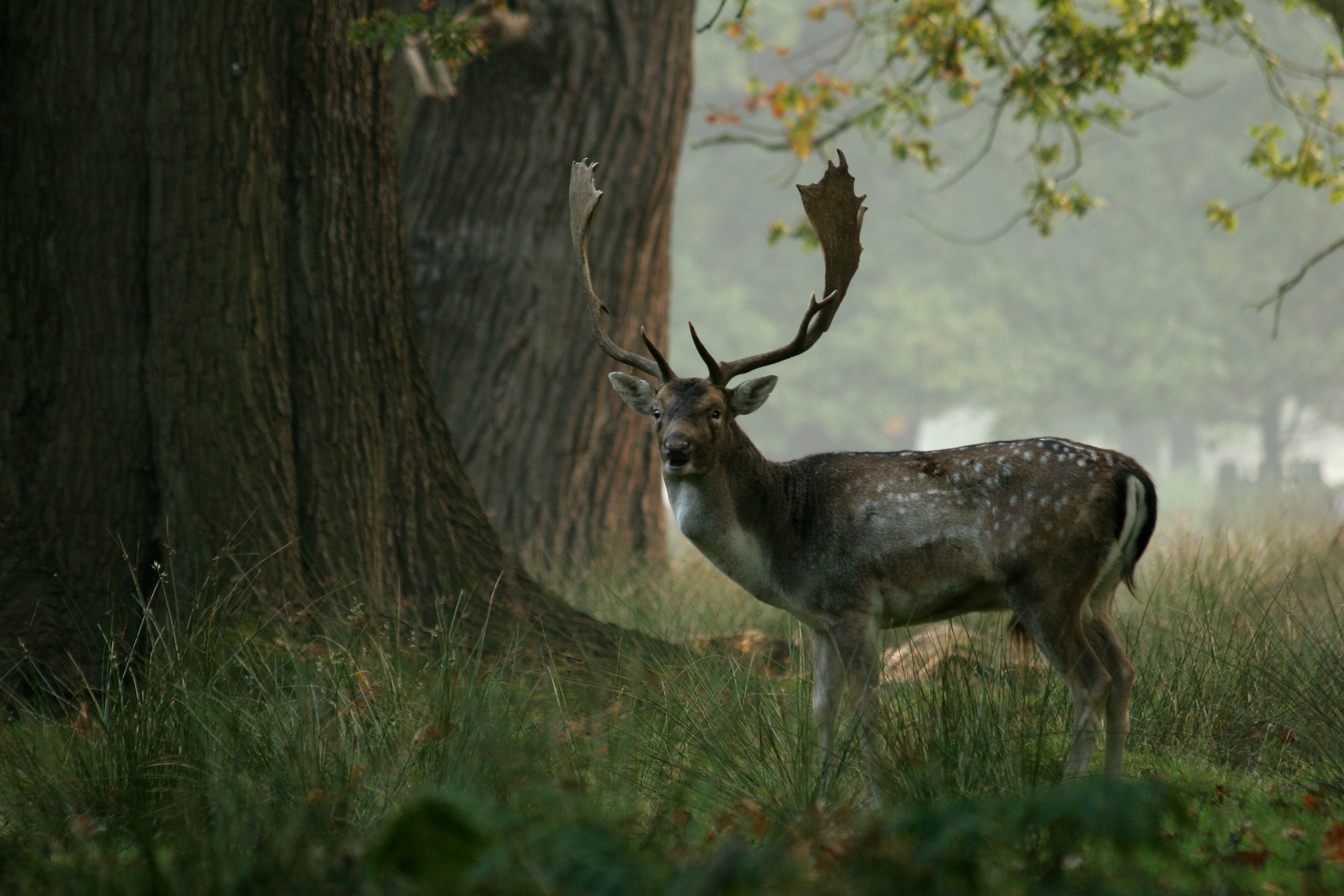
At the same time, Pozega-Slavonia hunters from the county association began collecting funds for the families of those tragically killed in the 29 December earthquake. They have so far collected some 50,000 kunas that will be directed to the intended recipients through the Croatian Hunting Association.
“This is a small help, but undertaken with an open heart,” said a representative from the County, who jointly organised the effort.
“We go to visit friends,” he said, in reference to the delivery of the Pozega-Slavonia hunters game, “and a Slavonian does not go empty-handed. We have loaded more than a ton of meat here (in this shipment), but there will be more because in co-operation with Croatian Forestry, Brod-Posavina County and the Radinje hunting ground, today we will take (in total) about three to four tons of game.”
“(Perhaps) the people of Moslavina will remember Slavonia next time they eat Slavonian čobanac (a local specialty stew, made from game) because she (Slavonia) is always thinking of her (Moslavina),” he concluded.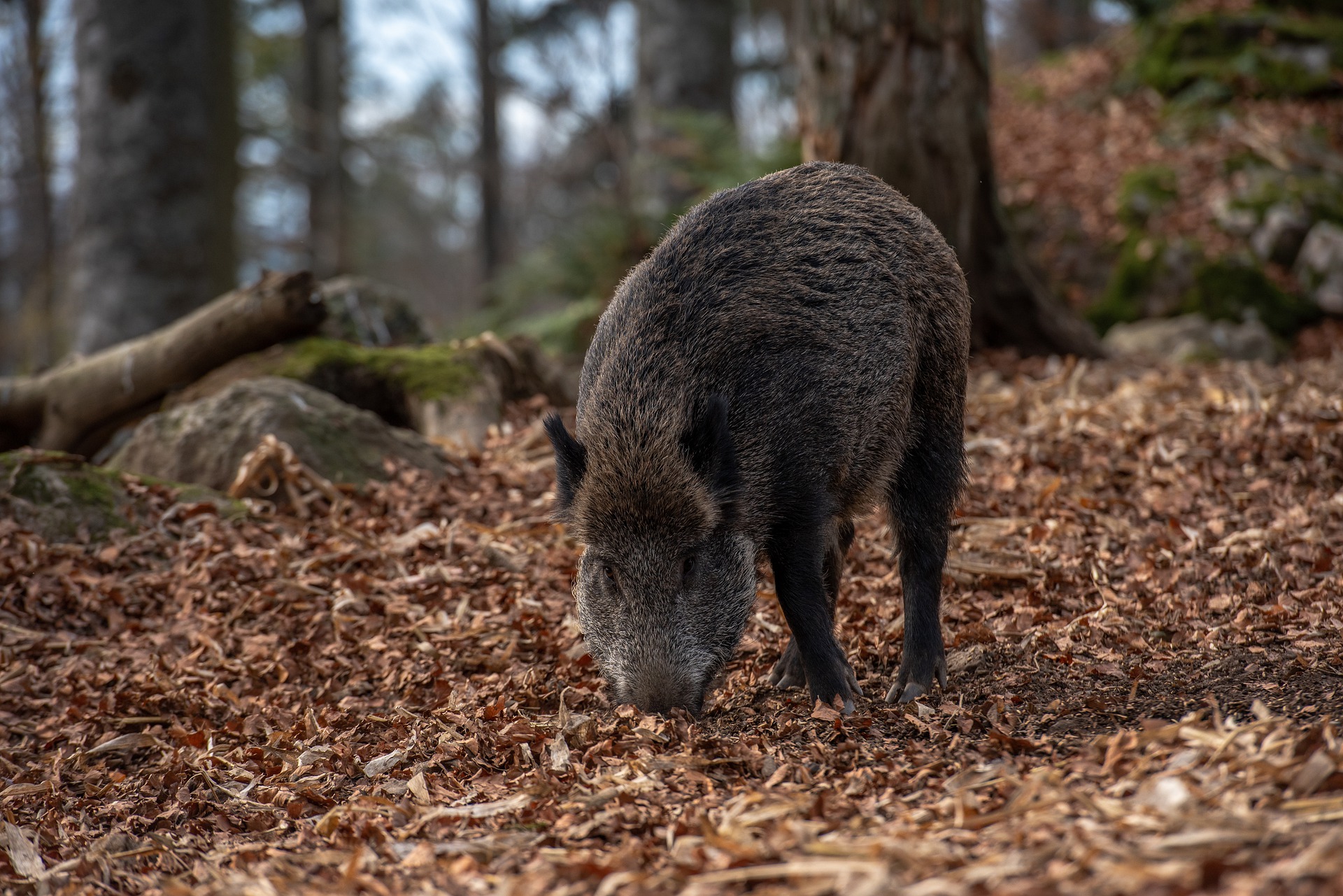
“Lovački savez Požeško – slavonske županije (Hunting alliance of Pozega Slavonia County) was the main organiser,” Mateja Tomasevic, Head of the County office told TCN. “Within it, there are 28 separate societies of Pozega-Slavonia hunters. They all participated in the humanitarian action.”
Among the 28 contributing societies were Hunting Associations 'Fazan' and 'Košuta' from Pakrac, 'Psunj' from Orljavac, 'Šljuka' from Brestovac, 'Jelen', 'Šijak', 'Sokolovac' and 'Sveti Hubert' from Požega, 'Dilj' from Buk, 'Vidra' from Sapna, Čaglin, 'Slavonac' from Kutjevo, 'Strijela' from Bektež, 'Papuk' from Biškupci, 'Sokol' from Bučje, 'Seljak' from Jakšić, 'Vepar' from Kaptol, 'Krndija' from Našice, 'Vranovac' from Vetovo, 'Šljuka' from Pleternica, 'Fazan' from Ruševo, 'Vražjak' from Sesvete, 'Sjeverni Dilj' from Seoce, 'Slavuj Gaj' from Poljana and 'Kuna' from Paka. Over 1300 residents of the county belong to one of the Pozega-Slavonia hunters associations.
Bravo!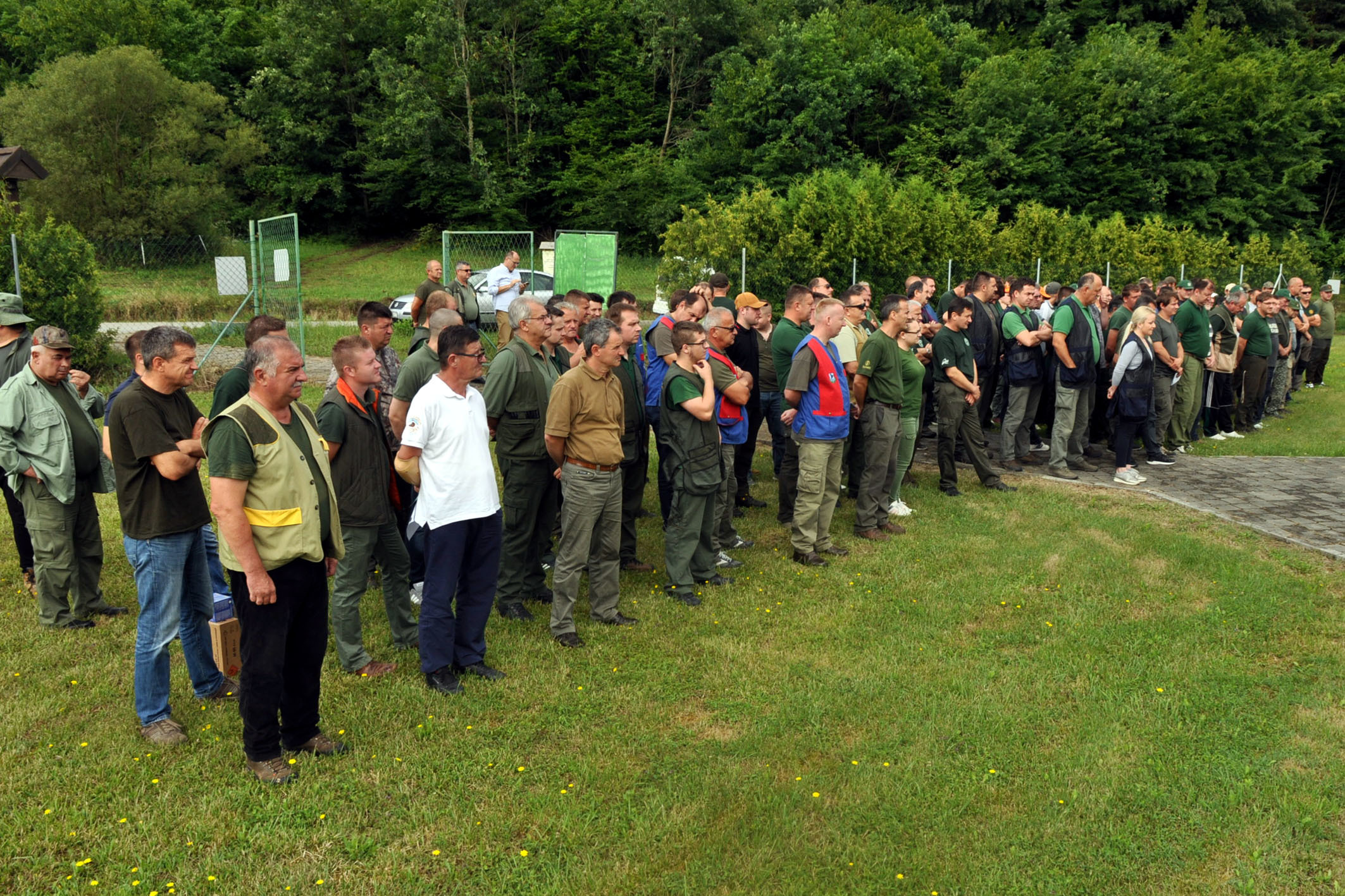 Some of the members of the Hunting Associations of Pozega-Slavonia County © Hrvatski Lovački Savez
Some of the members of the Hunting Associations of Pozega-Slavonia County © Hrvatski Lovački Savez
For the latest travel info, bookmark our main travel info article, which is updated daily.
Read the Croatian Travel Update in your language - now available in 24 languages
Join the Total Croatia Travel INFO Viber community.
Two Bodies Found By The Road, Frozen On Papuk Mountain
January 26, 2021 – Multiple harrowing questions are posed by the tragic discovery yesterday of two bodies found frozen on Papuk mountain. They were at first suspected to be those of migrants. It is still not yet known how they came to be there, if they were travelling together or alone.
Famous for its wealth of covering forest, cascading streams, picturesque views and wildlife, Papuk is the largest mountain in Slavonia, eastern Croatia. It's actually a stretch of mountain range with an eponymous peak and the whole area is designated as a Nature Park. It draws thousands of visitors each year who come to enjoy its natural beauty and the opportunities for walking and hiking it provides. But, in a place we associate with the fullness of life, it is death that yesterday came to Papuk Nature Park.
Two bodies have been found frozen on Papuk. On a section of the Velika - Jankovac road, which runs north-south right through the heart of the Nature Park, winter service employees found the first body frozen on Papuk on Monday at around 9.45 am while clearing snow on the route with a plow. At around 3pm on the same day, a second body was found frozen on Papuk by a 41-year-old man working in the area. Both were bodies of young men. Details were provided by the Virovitica-Podravina Police Department.
Though the two bodies found frozen on Papuk were not discovered simultaneously, they were located quite close together - within 3 or 4 kilometres of each other. It is not currently known if the two persons were associated with one another, were travelling together or of what nationality they are. On the evening of Monday 25 January, it was suspected and being widely reported in Croatian media that the bodies found frozen on Papuk were those of migrants.
If the persons were travelling through the area and were not alone, anyone alive and remaining within the mountainous area will be in a precarious position. Over recent days, temperatures within the park have reached daytime highs of -2. At night, the temperature has dropped to below -8. The snow is currently up to half a metre deep in some places on the Nature Park. As with many mountainous regions of Croatia at present, the snow continues to fall.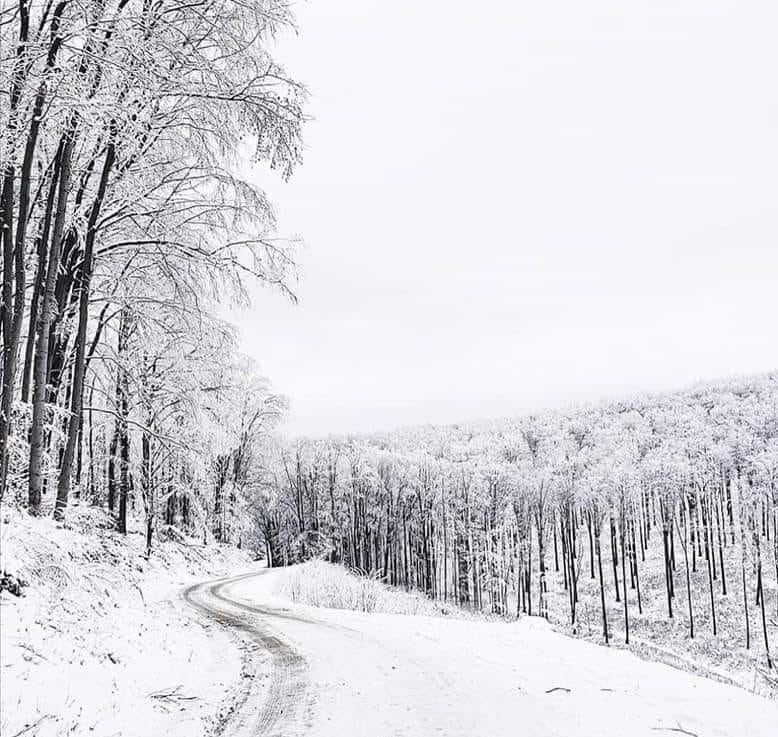 The snow is up to half a metre deep in some areas on Papuk at present. Over recent days, the nighttime temperature has dropped to below -8 © PP Papuk
The snow is up to half a metre deep in some areas on Papuk at present. Over recent days, the nighttime temperature has dropped to below -8 © PP Papuk
If the bodies found frozen on Papuk are ascertained to be migrants, many will wonder just what they were doing there and how they came to be there. The area in which they were found is some 70 kilometres from the nearest border with Bosnia and is not on any existing route popularity attempted by migrants for passage into more westerly-lying countries in Europe. From Papuk, the next nearest European border is Hungary, just short of 50 kilometres to the north. The crossing of the border into Hungary again is not one presently chosen by migrants.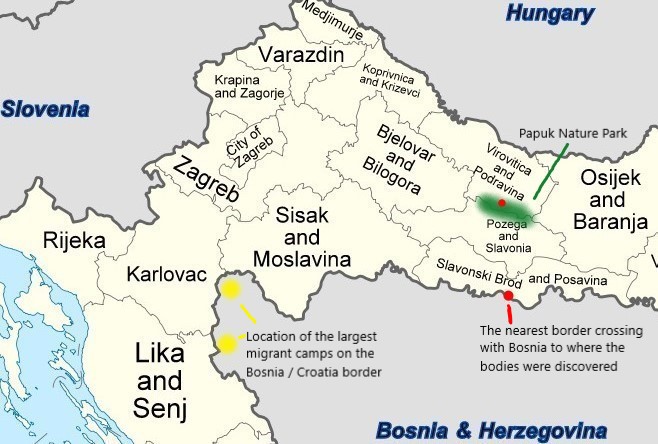 Map of Croatia © NordNordWest derivative work: Southpawphilly (talk), adapted by TCN
Map of Croatia © NordNordWest derivative work: Southpawphilly (talk), adapted by TCN
“It's a very strange route,” TCN was told by a man who has spent extensive time with migrants in the Bosnian camps which lie just across the border from Croatia. He preferred not to be named in this article. “If they are migrants, it is possible that they wandered off route. But, in my opinion, that is highly unlikely because most of them use mobile phones (for navigation) even more than we do.”
“I'm really only guessing, which is all that anyone can do for now, but I think it is more likely that, if they are migrants, someone drove them halfway and just left them there, telling them that it was a place that it was not. That's very much something that some of the smugglers are capable of. They could have been driven across the border from Bosnia, taken to the edge of the mountains and told that Slovenia was just on the other side.”
For now, the identities of the bodies found frozen on Papuk remain a mystery, as do the circumstances of how they came to be there. Croatian media is reporting that they have unofficially learned that no documentation was found on either of the bodies. This has lead many to believe that the bodies found frozen on Papuk may actually be locals who had become trapped there by severe and deteriorating weather conditions. The immediate area in which the bodies were found experienced a snowstorm on Sunday, with up to half a metre of snow being deposited.
By the late morning of 26 January, some Croatian media were reporting they had learned that the men were not migrants but were, in fact, local men. The matter is under investigation by the police. A search of the area was undertaken and a survey of the surrounding terrain assessed in order to decide whether other services were needed to be called on for any continuing search.
By order of the County State's Attorney from Bjelovar, both bodies were transported to the Department of Pathology in OB Virovitica, for autopsy and identification. A brief police statement said the public would be notified after an autopsy was performed.
UPDATE: In the mid-afternoon of 26 January, police confirmed that the bodies were those of a 26-year-old and a 38-year-old, both from the local area. The men's families had performed the sad task of identifying their bodies. Later in the day, it was confirmed that the two men did in fact know each other - they were brothers-in-law.
TCN will be updating this story as and when we receive more and relevant details
Wolf Spotted on Papuk After More Than 60 Years
December 18, 2020 – The last wolf was seen in the late 50s or early 60s, but during November, the wolf was again seen on Papuk. Based on the guard service footage, the Papuk Nature Park authorities are sure that this endangered species has returned to their area.
According to the report from the Papuk Nature Park, although the wolf has not been spotted so far, this video is real proof that Papuk is the place where the wolf returned. Recently, there were only stories about the wolf's appearance, but now this has been confirmed by numerous experts.
'The wolf does not pose a danger'
To explore the terrain and start monitoring the signs of wolf's appearance, the Papuk Nature Park Guard Service, experts from the Institute for Environmental Protection and Nature of the Ministry of Economy and Sustainable Development, and the Faculty of Veterinary Medicine, University of Zagreb organized the first field trip. They determined how conservationists, foresters, and hunters will monitor, record, and store all signs that would indicate the wolf's presence.
"After we unequivocally proved the presence of wolves in the Park, we conducted interviews with almost all users of this space. We explained to them that wolves' appearance is not unexpected, but also the most important thing at this moment, that it does not pose a danger to a wildlife fund, nor to cattle breeders. Earlier speculations about the damage to livestock in the wider area around Papuk proved to be wrong because it was not wolf attacks, but dogs that were unattended wandering the area," said Alen Jurenac, the director of the Park.
Jackal and wolf easy to mistake
As it is important to monitor the wolves' appearance, a meeting was organized in Jankovac on the premises of the Papuk Nature Park. They discussed the fauna present in the area, and especially the jackal population that records healthy and strong individuals, very often highly trophy in a shooting.
They also concluded that the wild animal population (deer and roe deer) is in excellent condition. Fear was expressed since the jackal and wolf are very easy to mistake, so that the wolf could die in this hunting season. Therefore, regular information on implemented and planned activities in the field is proposed.
The Park points out that they informed all hunting associations in the area about the wolf's appearance, and they also conducted a field tour of the Park area and hunting grounds, especially the location of the wolf snapshot. They also agreed on a future common way of monitoring them and selecting suitable sites for setting photo traps.
There are probably more of them
The last wolf in the Papuk area was shot in the late '50s or early '60s.
"All these years, there have been stories that the wolf was seen somewhere, but there was never any evidence. Our footage is the best proof of how the wolf re-settled on Papuk. Whether it is about him as an individual or there are more of them, it is quite debatable. It can be seen that he is younger, about a year old, and that he is playful. Given that wolves remain in the pack until the second year of life, because they are only then sexually mature, it is to be assumed that several other individuals did not enter the frame," Jurenac told Večernji list.
They set ten photo traps to keep a closer eye on him.
"Of course, the footage is not the only evidence, we are also looking at the traces the wolf leaves behind, and we are waiting for the leaves to fall off completely, so we will be able to follow them more easily. The wolf is strictly protected, and his return to Papuk is positive news," concluded Jurenac.
To read more news from Croatia, follow TCN's dedicated page.
Papuk Nature Park has UNESCO Status Extended for Four Years
March 26, 2020 - Papuk Nature Park, the first UNESCO Geopark in the Republic of Croatia, has retained its status as one of the world’s geoparks.
Namely, HRTurizam reports that part of the regular revalidation process, a two-member UNESCO Geoparks Commission visited in July 2019. During their four-day visit to the Papuk Geopark, they were presented the progress made in the past two years, from infrastructure to new projects, and met with stakeholders and representatives of local government.
The UNESCO World Geoparks Council, based on the report of the revalidation, has decided to extend its status in the UNESCO World Geoparks by four years, with recommendations for future work.
“We base the entire future of the Park on the signature of UNESCO. And our biggest project, Geostories, bears its name. Therefore, the whole progress of the Park's tourism offer, carried out for the benefit of the local community, is also due in large part to the status of a UNESCO geopark. We are thrilled and proud that our membership in the World Geoparks Community has been extended for another four years,” said Alen Jurenac, the Papuk Nature Park Director.
Thanks to its lowland plains with large cultivated areas, Papuk Nature Park is one of the main features of Slavonia. The Papuk Nature Park is located in the mountain forest areas of Papuk and was declared a nature park on April 23, 1999. Its exceptional natural value encompasses a great diversity of habitats and species of plants and animals, but also geological diversity represented in numerous geological formations created in different periods of Earth's past.
Of particular value are the numerous fossil finds of organisms that lived 16 million years ago in the "Pannonian Sea".
The Papuk Nature Park, near Vocin, houses the first geological nature monument in the Republic of Croatia, protected in 1948 because of its unique morphological occurrence in Croatia - the columnar secretion of volcanic rocks.
To read more about lifestyle in Croatia, follow TCN's dedicated page.
New Tourist Facilities at Slavonia's Amazing Papuk Nature Park
The renovation and equipping of the "Pannonian Sea House" is part of the praiseworthy "UNESCO Geopark Geostories" project at the incredible Papuk nature park, which was once in the middle of a sea.
As Poslovni Dnevnik/Marta Duic writes on the 6th of February, 2020, sixteen million years ago, Papuk was an island in the Pannonian sea inhabited by rhinos and being swum around by a now extinct species of shark. This is extremely difficult to imagine today, given that the modern day Papuk nature park is located in Slavonia, far from any sea.
Numerous fossils of now extinct living organisms, mostly marine animals, testify to the ancient past of this "Slavonian archipelago", located in Velika, within Papuk nature park. The popular continental Croatian nature park has now received a new, impressive exhibition - the Pannonian Sea House.
This visitor-education centre was opened back in late 2019, is part of the already existing Visitor Centre in Velika, and covers an area of 158 square metres. Along with impressive exhibition halls, there are multi-purpose lecture rooms for interactive lectures, a gift shop and even an outdoor classroom.
The renovation and equipping of the "Pannonian Sea House", worth almost five million kuna, is an important part of the "UNESCO Geopark Geostories" project, which is co-financed by the Ministry of Regional Development and EU Funds. In addition to the Pannonian Sea House, the project also purchased electric and mountain bikes for rent in Velika and in the Jankovac Forest Park.
The adrenaline park was built in Velika last year, and the first eco-park, Duboka, was opened three years ago, powered by solar panels and which has its own recycling yard and biological water purifier. This has made Pozega-Slavonia County, which is otherwise almost entirely overlooked by tourists, a top Croatian destination for anyone considering the environment, as well as for lovers of walking, hiking and recreation.
Otherwise, Papuk nature park had a record number of visitors in 2019, with 52,485 tourists visiting it - almost 50 percent more than a year earlier. There is no doubt that the Pannonian Sea House, as a testament to life as it used to be in the area, will attract new visitors, especially schoolchildren, who will learn about the geological story of this region in both an original and in a technologically advanced way.
In addition to the new tourist attraction, at the end of the year, the directors of five tourist boards gathered in Croatia to jointly promote the beauty and the tourist offer of this often forgotten region, namely Slavonia, and work together to promote and present Slavonia as Croatia's new tourist destination.
The Slavonia destination project will have an impact on the development of small and medium-sized enterprises (SMEs), as it implies a greater use of new technologies and communication platforms in the promotion and marketing of tourism products, and therefore the greater involvement of local businesses.
Make sure to follow our travel page for more information on Papuk nature park and much more.
Golden Slavonia Flavours for Regeneration after Recreation at Papuk Nature Park
Recent news from the Papuk Nature Park has pleasantly surprised us. In late February, visitors will be able to experience Papuk with a flying balloon; one week ago, works on the construction of the Geo-Info Centre in Voćin started, where geologic, biological and cultural-historical landmarks of the nature park will be presented to the visitors. Papuk is drawing ever more interest from tourists at specialised international fairs such as Natour Alpe-Adria in Ljubljana and Caravan in the Dutch town of Leeuwarden.
At the fair in the Netherlands, I found myself entirely by chance in the role of an information officer at the stand of the Slavonia Cluster, which brings together five Slavonian county tourist boards, and I saw for myself that Papuk is at the top of the visitors' wish-lists. People are thrilled to be able to camp at the Duboka camp and then use the network of cycling trails to visit cultural monuments such as medieval fortresses, geological monuments like Rupnica, protected natural landscapes such as the Sekulinačke Mountains, enjoy the top gastronomy in restaurants bearing the Taste of Slavonia mark, or engage in wine tasting in one of the many boutique wineries located at the outskirts of the park.
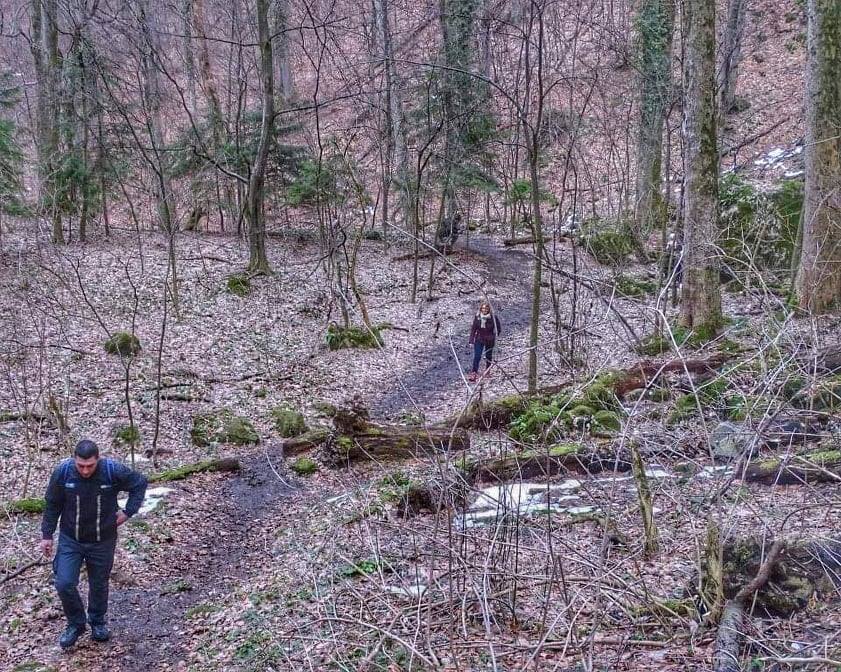
After a tour that included Zagreb, Hungary and Slovakia, I decided to use the first available Sunday in February to visit Papuk. A five-kilometre long spiral road that runs from Slatinski Drenovac to Jankovac is almost entirely paved, with just a short section missing at the very end, but construction machines are parked along the road, so I believe this will be solved very soon.
The road itself is attractive enough for the visitors to be able to see (at least some) of the beauties of the Papuk landscapes. On the left, there is a steep ravine, and on the right side, there is the mountain massif. The road is continually twirling and driving on it is never monotonous. Drenovac is located at 172 metres above sea level and Jankovac at 475 metres. Before Jankovac, visitors pass by the majestic waterfall called Skakavac. Given that the summit of Papuk is located 953 metres above sea level, it is easy to see that Jankovac is located "on the halfway of Papuk" and is, therefore, an ideal starting point for exploring the Slavonian mountain.

At Jankovac, there are a lot of cars and visitors. From the entrance, we turn right and look for a parking spot. Hmmm ..., parking problems at Jankovac!? Part of the team complains that this was not as it used to be and all of this has been over-commercialised. But, why should we be jealous? Why not allow other people to enjoy something we have been enjoying for years, not to say for decades? Of course, provided it does not disturb the natural balance.
The natural heritage belongs to all of us, and everyone should enjoy it under the same conditions. We saw a parking spot and just when we wanted to park there, we saw an unusual traffic sign next to the parking spot: below the letter P, a woman and a baby carriage were drawn; this parking is reserved for women with small children! Since we do not fall into that category, we went a bit further and finally found a free parking place. After that, at the reception centre, we bought tickets which cost just ten kuna. I took a photo at the selfie spot and sent a digital postcard from Papuk to my friends and acquaintances.
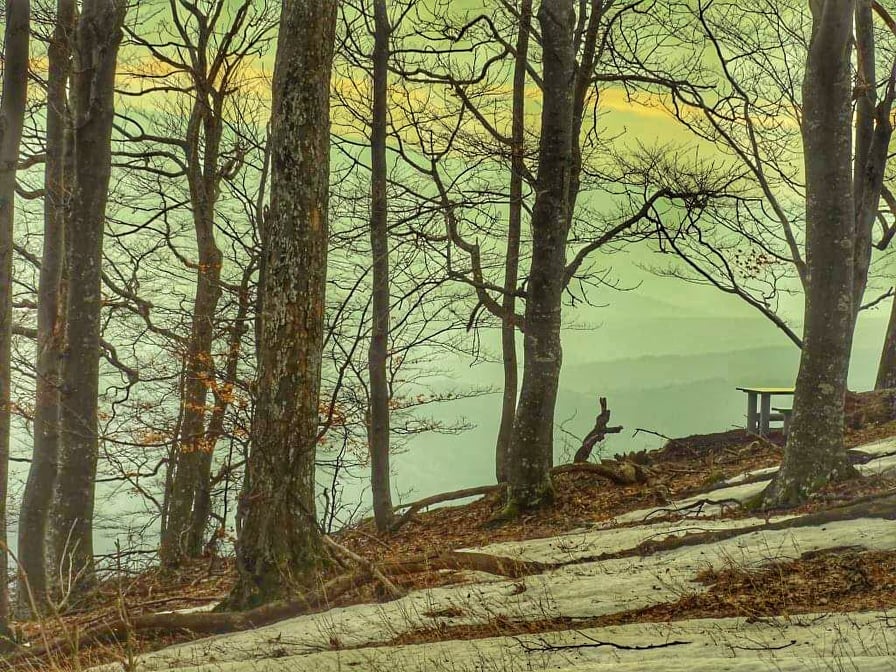
The temperature was, of course, lower than in the Slavonian lowlands from which we came. We went to a hiking lodge with a cafe, a restaurant and a pension, and had a short drink just enough to get warm inside and prepare for a hike in nature.
Because of the high snow banks that were still present on Papuk (unlike in the Slavonian lowlands where the snow had almost completely melted), and because I led a team that did not have the proper equipment for hiking in winter, we did not do the routine rituals like a visit to Ivačka Glava, the second highest peak of Papuk at 913 metres above sea level and the highest peak of the mountain accessible to ordinary visitors (there is a military facility at the very top; therefore it is closed and inaccessible), or to Nevoljaš, located at 740 metres above sea level, where there is a viewing point offering great views.

We had to settle for hiking on the educational trail. The Count Education Trail is named after Count Josip Janković, who also gave his name to Jankovac. One of the stations of the path is the count's final resting place located in a cave. There is also a cave with bats, viewing points, refreshment points, wooded stairs that make climbing easier...

After a leisurely tour of the educational trail that lasted for an unusually long time, we again found ourselves in front of the hiking lodge and saw a car with Požega registration plates all muddy. It was immediately clear that it came from the southern side of Papuk, from the direction of Velika, which still does not have a paved road. But that was a sign that this road was passable. We got into the car and headed for Velika towards which there is a macadam road three times longer than the one leading from Jankovac to Drenovac.
Along the way, we stopped near the Papuk summit. A soldier in the uniform behind the fence greeted us and asked, "To the bench, right?" And we answered vaguely: "Of course!" He only smiled and waved us in with his hand, used to the many visitors coming there. When passing along the fence of the military facility, you come to a forest opening on whose right side there is a bench with fantastic views of Papuk. The hike on the educational trail was too little for us, so we had to stop there to get to know Papuk better.
We arrived in Velika (the location of the first of the two camps in Požega-Slavonia County), at the Čiča Mata cafe where we drank a homemade herb brandy and continued towards the Zlatni Lug tavern, located in Donji Emovci, a small suburb of Požega. Zlatni Lug is just one part of a larger tourist complex that has the tavern/restaurant, an excursion site, a lodging house, a souvenir shop and a camp – the second camp in Požega County.
The Zlatni Log restaurant is decorated in a rustic style and has the "Tastes of Golden Slavonia" mark, which means it offers local dishes 365 days a year. We ordered homemade brandy and bread with lard made of a black Slavonian pig as an appetiser. The pig lard is a traditional Slavonian ingredient which has long been neglected, but is now becoming more prominent and appreciated, and it has its well-deserved place in the local restaurant offer. This is supported by the latest research which shows that pig fat is healthier than oil. The fats are transformed into energy and stimulate absorption of vitamins and do not contain synthetic substances, unlike margarine and industrial oils.

Although the Zlatni Lug restaurant is also known for its delicacies made from the autochthonous Pannonian Podolac cattle, since I started with pork, I continued in this vein and ordered a pork chop with bacon and “kajmak,” along with the Šopska salad. It was a perfect combination. Of the other specialities, the restaurant offers a turkey steak in gorgonzola sauce, a green pepper steak, grilled or in mushroom sauce, trout in pumpkin seeds, a perch fillet with cream and garlic, carp grilled on a fork, the winegrower’s kebab, and the fried pork brains in eggs — something for everybody.
During the dinner at the restaurant, we remembered the legendary beer festival called the Požega Beer Mug, which was held until two years ago at the nearby Zlatni Lug excursion site. Wishing to taste the local beers, we went to Požega and visited the Slawoner pub. I tried the Slawoner Kriek – a draught beer with a sour cherry, which impressed me at homebrewing/craft brewing meet in Đakovo last year when I first tasted it. Slawoner is also the name of the first Požega craft brewery founded and managed by Sandi Mance, one of the pioneers of craft brewing in Slavonia. Apart from locally-made beers, the Slawoner pub offers a whole range of other crafts beers, but my rule is always to try local, preferably draught beer.
In addition to the brilliant and long-established winemaking scene, the Golden Valley also has a strong beermaking scene, and all of this completes the flavours of the Golden Slavonia. For tastes to reach their full intensity, it is necessary to be reasonably hungry and thirsty, which Papuk took care of; or, as we said in the headline of this article: after recreation there comes regeneration. All in all, this was a wonderful excursion, and this article is a recommendation and a roadmap for everyone how to spend a weekend combining the enjoyment of untouched nature with the delights of indulging in local delicacies.
More news about the Papuk Nature Park can be found in the Travel section.


